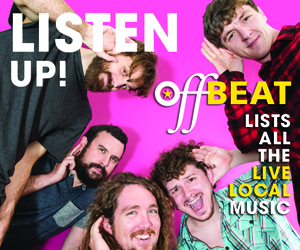I’ve insisted repeatedly over the years the need for a highly visible and accessible museum in New Orleans that focuses on our musical culture.
There are many venues and organization out there that have their own collections. The problem is that they’re relatively obscure, not in the consumer’s face, and not that easy to find.
For example, take the Backstreet Cultural Museum.
I met social entrepreneur Sylvester Francis about 13 years ago one evening at Ernie K-Doe’s Mother-In-Law Lounge, when both Ernie and Antoinette K-Doe were still around. He struck me as a totally sincere, dedicated individual who was totally dedicated to preserving the local Mardi Gras Indian and second line cultures that are the basis for much of what is known as “New Orleans” or “Mardi Gras” music. Mr. Francis is the driving force and creator of the Backstreet Cultural Museum. We honored Mr. Francis with a Best of The Beat Heartbeat Award for his work in preserving New Orleans culture in 2003.

Sylvester Francis stands in the BackStreet Cultural Museum, and regularly exhibits at the New Orleans Jazz & Heritage Festival. (Photo: nojazzfest.com)
In American culture, our Indians, second lines and jazz funerals are totally unique and fascinating. There’s nowhere else to find the in-depth information on these features of New Orleans music than at the Backstreet Cultural Museum. From their website:
“Today, the Backstreet Cultural Museum holds the world’s most comprehensive collection related to New Orleans’ African American community-based masking and processional traditions, including Mardi Gras Indians, jazz funerals, social aid and pleasure clubs, Baby Dolls, and Skull and Bone gangs. The museum’s filmed records of over 500 events constitute the most cohesive archive documenting these cultural traditions.
“In addition to its permanent exhibits, the Backstreet Cultural Museum hosts public performances of music and dance, provides outreach programs, and creates an annual book, Keeping Jazz Funerals Alive, that chronicles the year’s jazz funerals.
“The Backstreet Cultural Museum is a pillar in the Tremé community where second-line parades begin and end, the North Side Skull and Bone Gang and Mardi Gras Indians congregate on Mardi Gras day, and school children identify family members in the photographs on the wall. The museum is active in Tremé and promotes art and culture as important to the neighborhood’s identity and future.”
We regularly receive emails from people around the world who will be visiting the city, asking about second-line parades, and we always refer them to the Backstreet Museum.
In this and in upcoming Weekly Beat issues, we’ll be linking to the museum’s web page. If you want to know more about New Orleans’ indigenous culture, this is the place to go.
Have a wonderful holiday weekend, and please be sure to remember why we celebrate Memorial Day.




